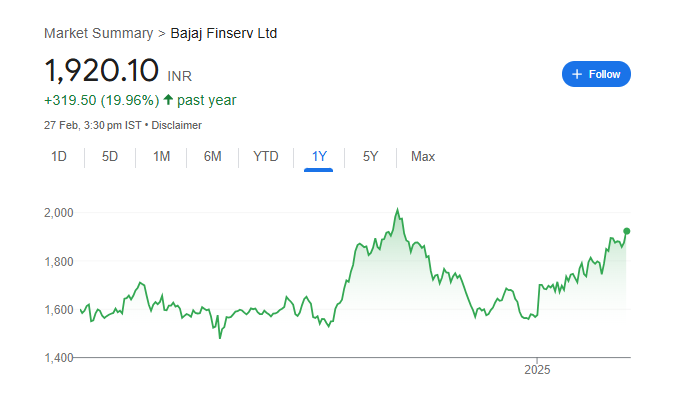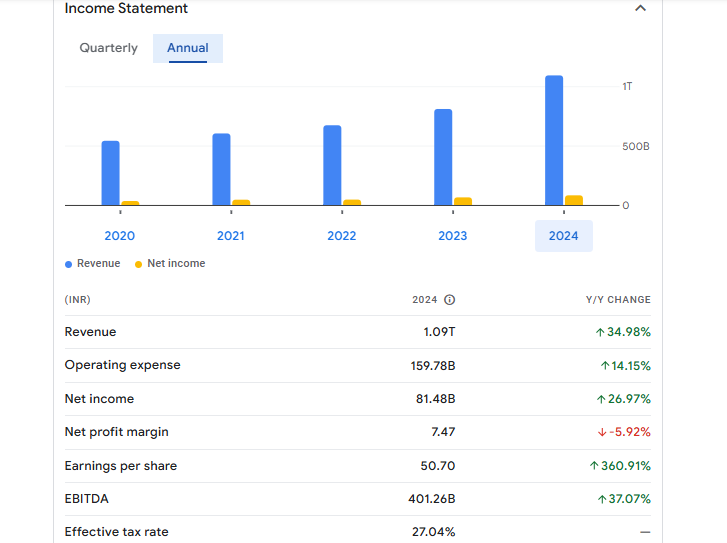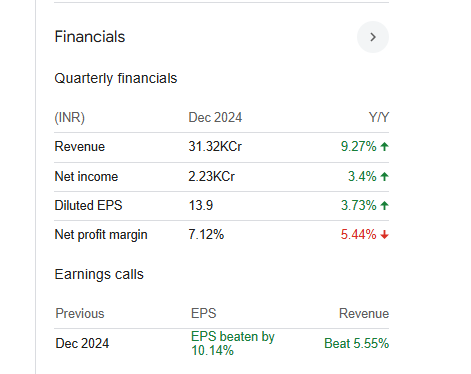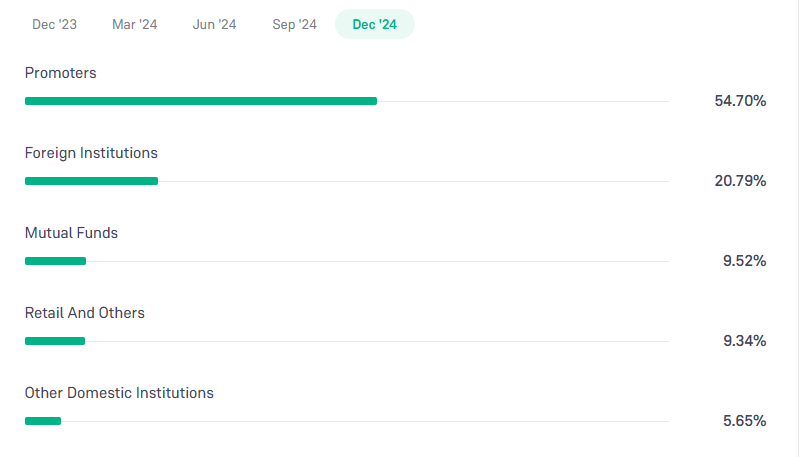Bajaj Finserv is a leading financial services company in India, offering loans, insurance, and investment solutions. Its share price target depends on factors like business growth, financial performance, and market trends. With a strong presence in the financial sector and a focus on digital innovation, Bajaj Finserv continues to attract investor interest. Bajaj Finserv Share Price on 27 February 2025 is 1,920.10 INR. This article will provide more details on Bajaj Finserv Share Price Target 2025, 2026 to 2030.
Bajaj Finserv Company Info
- Founded: 30 April 2007
- Headquarters: Pune
- Number of employees: 92,079 (2024)
- Parent organization: Bajaj Group
- Revenue: 82,072 crores INR (US$10 billion, 2023)
- Subsidiaries: Bajaj Finance, Bajaj Allianz Life Insurance
Bajaj Finserv Share Price Chart

Bajaj Finserv Share Price Details
- Today Open: 1,882.15
- Today High: 1,938.80
- Today Low: 1,881.00
- Mkt cap: 3.07LCr
- P/E ratio: 36.05
- Div yield: 0.052%
- 52-wk high: 2,029.90
- 52-wk low: 1,419.05
Bajaj Finserv Shareholding Pattern
- Promoters: 54.70%
- Foreign Institutions: 20.79%
- Mutual Funds: 9.52%
- Retails and others: 9.34%
- Domestic Institutions: 5.65%
Bajaj Finserv Share Price Target Tomorrow 2025, 2026 To 2030
- 2025 – ₹2030
- 2026 – ₹2350
- 2027 – ₹2756
- 2028 – ₹3080
- 2029 – ₹3452
- 2030 – ₹3845
Bajaj Finserv Share Price Target 2025
Bajaj Finserv share price target 2025 Expected target could be ₹2030. Bajaj Finserv is a leading financial services company in India, offering insurance, lending, and wealth management solutions. Its share price target for 2025 will be influenced by several key factors. Here are six important aspects that could drive its growth:
1. Strong Growth in the Financial Services Sector
With rising demand for loans, insurance, and investment products, Bajaj Finserv is well-positioned to benefit. India’s growing middle class and increasing financial awareness will likely boost the company’s business, positively impacting its stock price.
2. Expansion in Digital Financial Services
The company is focusing on digital transformation by offering online lending, digital insurance, and fintech solutions. A successful expansion in digital financial services can improve customer reach, increase revenue, and support a higher stock price target in 2025.
3. Loan Book Growth & Credit Demand
Bajaj Finserv’s lending business, through Bajaj Finance, plays a crucial role in its overall performance. A higher demand for consumer loans, home loans, and business financing can drive earnings growth, leading to a stronger share price. However, managing non-performing assets (NPAs) is also important.
4. Insurance & Wealth Management Business Performance
The company’s insurance division, Bajaj Allianz, is a major revenue driver. If Bajaj Finserv continues to expand its insurance and wealth management business with new products and better customer service, it could boost profitability and investor confidence.
5. Regulatory Policies & RBI Guidelines
The financial sector is highly regulated, and any changes in RBI policies, interest rates, or lending regulations can impact Bajaj Finserv’s operations. Favorable policies can help the company grow, while strict regulations might slow down its expansion.
6. Overall Economic & Market Conditions
Bajaj Finserv’s growth is linked to India’s economic performance. If the economy remains strong with high GDP growth, increasing consumer spending, and stable inflation, the company will likely benefit. However, economic slowdowns or market downturns could affect loan demand and stock performance.
Bajaj Finserv Share Price Target 2030
Bajaj Finserv share price target 2030 Expected target could be ₹3845. Bajaj Finserv is a major player in India’s financial sector, but its long-term growth and share price target for 2030 depend on how well it navigates certain risks and challenges. Here are six key factors that could impact its performance:
1. Economic Slowdowns & Market Volatility
The financial services sector is closely tied to the economy. If India faces an economic slowdown, recession, or high inflation, it could lead to reduced demand for loans, insurance, and investment products, negatively affecting Bajaj Finserv’s revenue and stock price.
2. Rising Interest Rates & RBI Regulations
Any increase in interest rates by the Reserve Bank of India (RBI) can make borrowing costlier for consumers and businesses, leading to lower credit demand. Additionally, stricter RBI regulations on lending, insurance, or digital finance could impact Bajaj Finserv’s operations and profitability.
3. Loan Defaults & Rising NPAs
Bajaj Finserv, through Bajaj Finance, provides a wide range of loans. If customers fail to repay their loans (high non-performing assets or NPAs), it could hurt the company’s financial stability and affect investor confidence, putting pressure on the share price.
4. Increasing Competition in Financial Services
The Indian financial market is highly competitive, with banks, NBFCs, and fintech startups offering similar services. If Bajaj Finserv fails to innovate or maintain its market leadership, it could lose customers to competitors, impacting growth and share price targets for 2030.
5. Technological Disruptions & Cybersecurity Risks
The company is investing in digital financial services, but the fintech space is evolving rapidly. Any failure to adopt new technologies, secure digital transactions, or prevent cyber threats could weaken customer trust and business performance in the long run.
6. Regulatory & Tax Policy Changes
Changes in taxation, government policies, or financial sector regulations could impact the company’s profitability. For example, new rules on digital lending, insurance claims, or financial transactions could either create growth opportunities or add compliance burdens.
Financials Statement Of Bajaj Finserv
| (INR) | 2024 | Y/Y change |
| Revenue | 1.09T | 34.98% |
| Operating expense | 159.78B | 14.15% |
| Net income | 81.48B | 26.97% |
| Net profit margin | 7.47 | -5.92% |
| Earnings per share | 50.70 | 360.91% |
| EBITDA | 401.26B | 37.07% |
| Effective tax rate | 27.04% | — |




